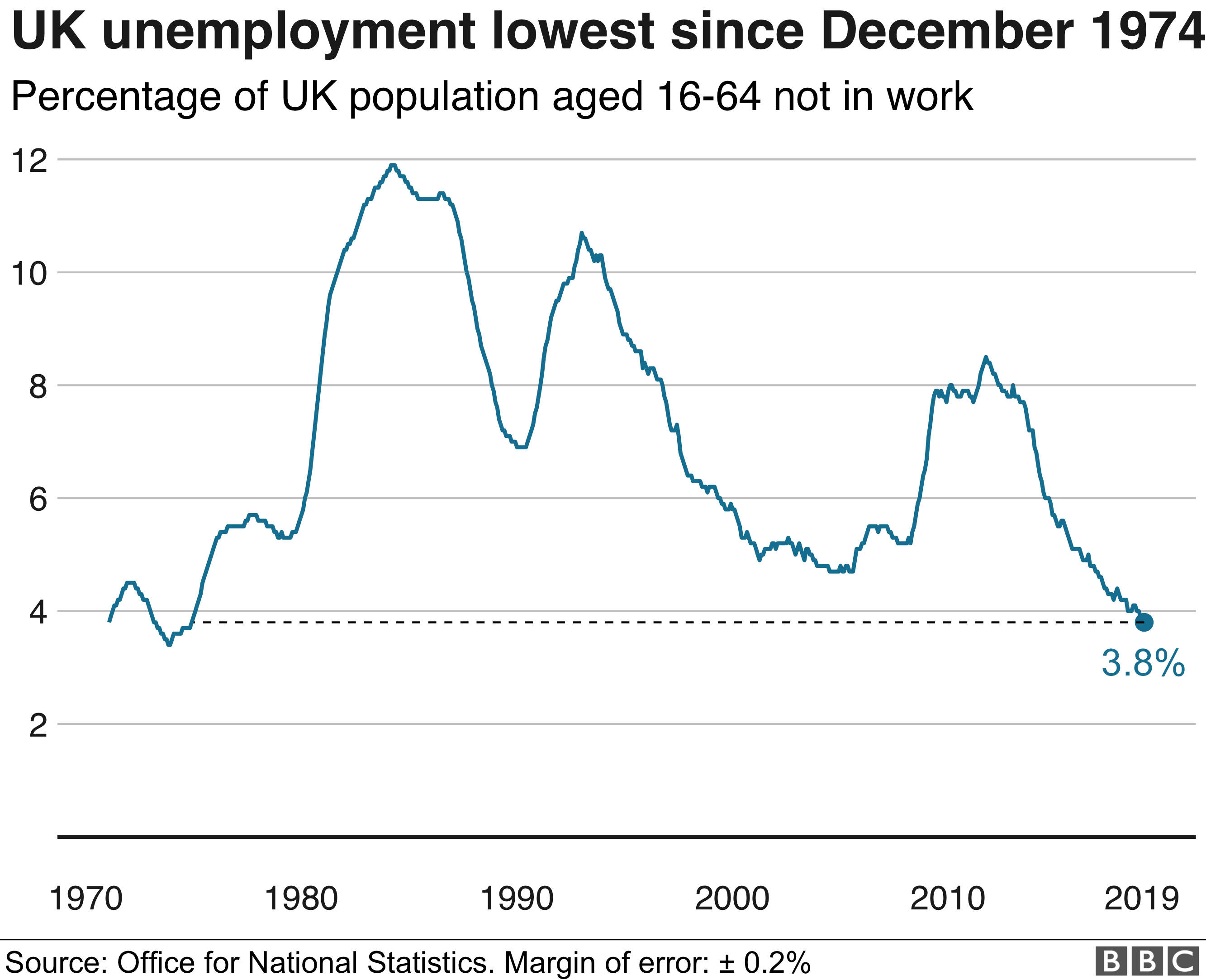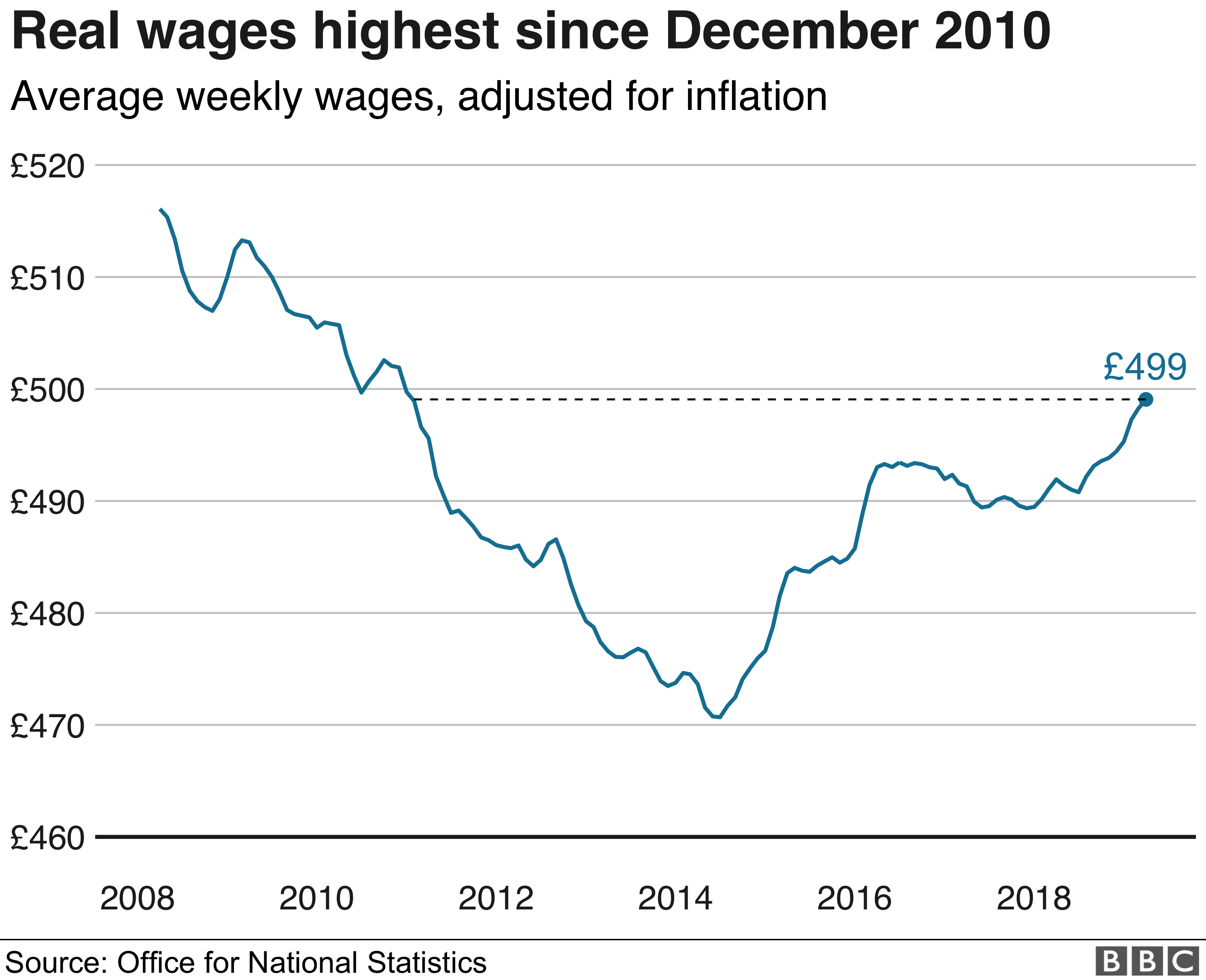Special report(wp/bbc):::
Britain's female unemployment rate in the first three months of the year has fallen to 3.7%, the lowest since comparable records began in 1971.
The Office for National Statistics included the figure in data showing the overall unemployment rate in the three-month period stood at 3.8%, the lowest rate since late 1974.
For men the rate was 3.9%, the lowest since mid 1975.
Excluding bonuses, average weekly earnings for employees rose by 3.3%.
In the January-March period, total earnings, including bonuses, rose by an annual 3.2%, slowing from 3.5% in the three months to February.
The ONS said that unemployment rates for both men and women aged 16 years and over have been generally falling since late 2013.
The overall unemployment rate of 3.8% was last matched in the three-month period from November 1974 and was lower, at 3.7%, in the last three months of 1974.

For January to March 2019, the ONS said 1.3 million people were unemployed, 119,000 fewer than for a year earlier and 914,000 fewer than for five years earlier.
Looking at women in the work place, the ONS said the increase in the employment rate for women in recent years is due partly to changes to the state pension age for women, resulting in fewer women retiring between the ages of 60 and 65 years.
The ONS added that since estimates began in 1971, total hours worked by women have generally increased, reflecting increases in both the employment rate for women and the UK population
In contrast, total hours worked by men have been relatively stable. This is because falls in the employment rate for men have been roughly offset by population increases.
Ben Brettell, senior economist, Hargreaves Lansdown said the unemployment figures were strong given the issues facing the economy.
"The UK labour market has been remarkably resilient in the face of Brexit-related uncertainty," he said.
The latest data shows that over the last five years the unemployment rate for men has fallen from 7.0% to 3.9%, the ONS said.
The unemployment rate for women has shown a smaller fall over this period - from 6.4% to 3.7%.
But Prof Geraint Johnes, at Lancaster University Management School, added a note of caution.
He said the number of full-time employees fell in the quarter, which was offset by an increase in full-time self-employed workers and that the number of employees working part-time also rose.

"Whether these shifts indicate a longer term increase in precarity will need to be monitored carefully over the coming months. The labour market seems now to be exhibiting signs of nervousness that, given present uncertainties, should not be surprising," Prof Johnes said.
Productivity also fell, with the ONS saying that that output per hour fell by an annual 0.2% in the first quarter - its third consecutive fall.
While average real wages - adjusted for inflation - were the highest since December 2010, the TUC said the rate of increase was slowing.
TUC General Secretary Frances O'Grady said: "Pay growth is stalling again. The last thing workers need is another hit in the pocket when real wages are still lower than a decade ago".
Employment Minister Alok Sharma said the rise in wages and booming higher-skilled employment meant prospects for families were improving.
"We now need to shift some of our focus to up-skilling people and supporting them into roles with real career progression to create a modern workforce fit for the challenges of the 21st Century," he said,
No comments:
Post a Comment